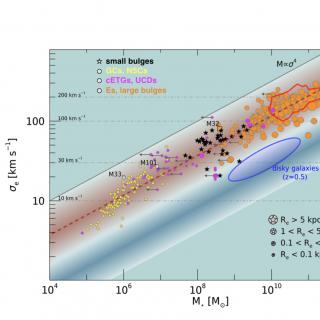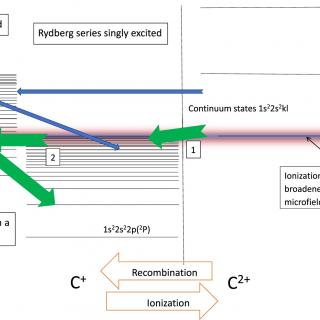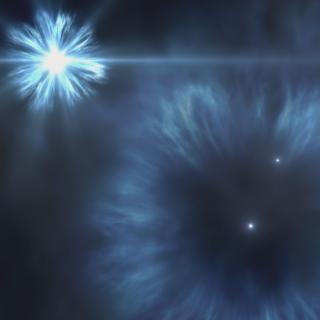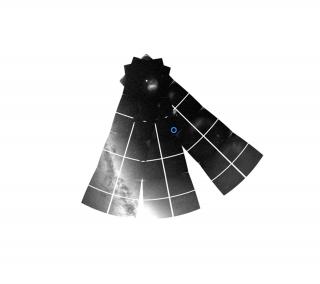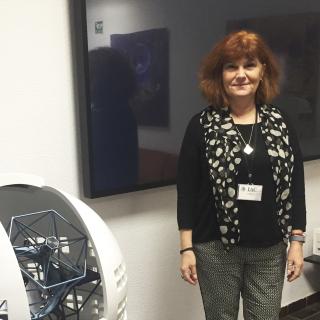![Oxygen-to-iron abundance ratios [O/Fe] vs. metallicity [Fe/H] of the iron-poor star J0815+4729 (large star symbol) compared with literature measurements. 1D-LTE oxygen-to-iron abundance ratios [O/Fe] vs. metallicity [Fe/H] of the iron-poor star J0815+4729 (large star symbol) compared with literature measurements from the [O I] forbidden line (diamonds), the near-IR O I triplet (circles), and the near-UV OH lines (squares). The two triangles at [Fe/H] ∼ −3.6 correspond to the oxygen measurement from OH lines in the metal-poor binary stars CS 22876–032 AB (González Hernández et al. 2008).](/sites/default/files/styles/crop_square_2_2_to_320px/public/images/news/figuraoxygenJ0815_f.png?h=063d2993&itok=TRrz9Jk_)
We present an analysis of high-resolution Keck/HIRES spectroscopic observations of J0815+4729, an extremely carbon-enhanced, iron-poor dwarf star. These high-quality data allow us to derive a metallicity of [Fe/H] = −5.49 ± 0.14 from the three strongest Fe I lines and to measure a high [Ca/Fe] = 0.75 ± 0.14. The large carbon abundance of A(C) = 7.43 ± 0.17 (or [C/Fe] ∼ 4.49 ± 0.11) places this star in the upper boundary of the low- carbon band in the A(C)–[Fe/H] diagram, suggesting no contamination from a binary AGB companion. We detect the oxygen triplet at 777 nm for the first time in an
